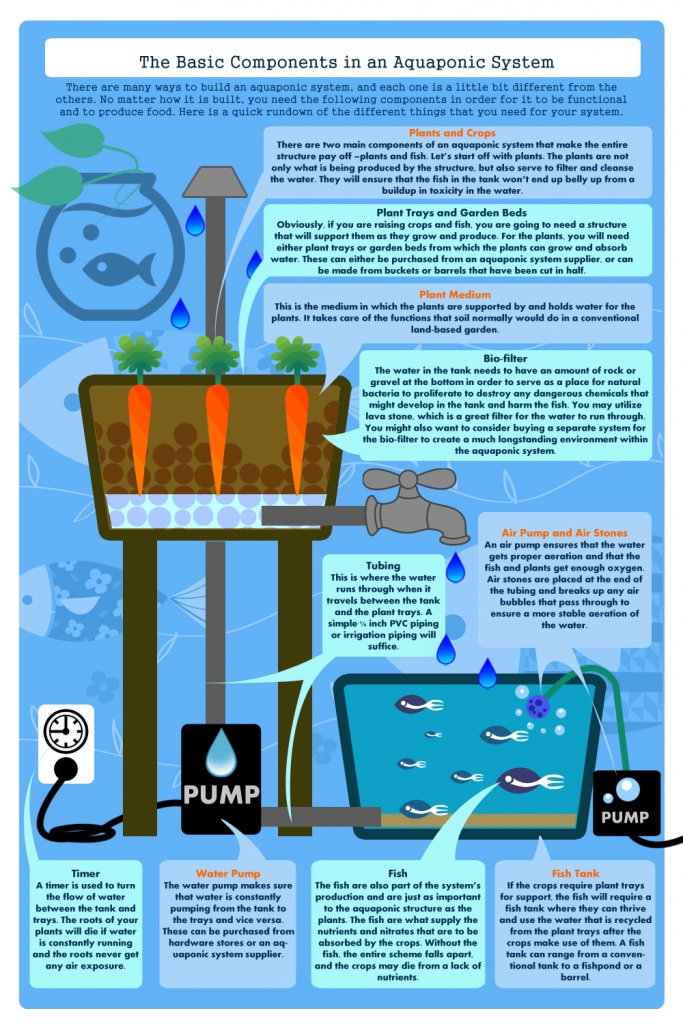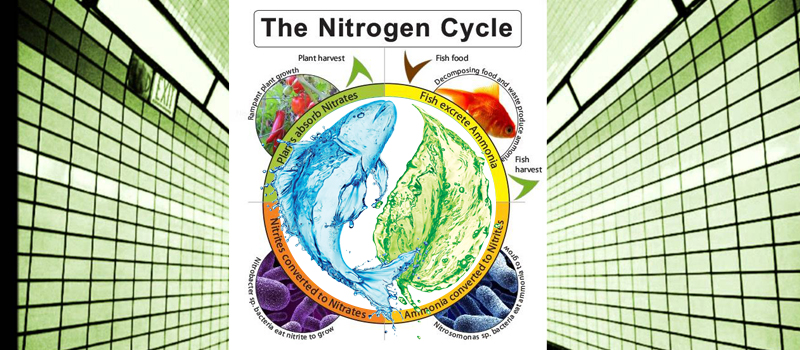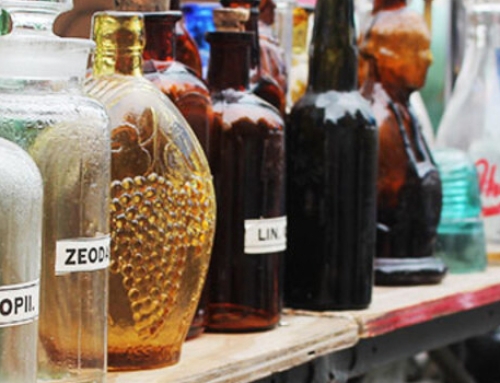How it all works together
 The nitrogen cycle is the most important process in an aquaponic system; it’s what makes a closed ecosystem of aquaponics work — the efficiency of which determines the system’s health and production potential. The fish feed is responsible for the majority of the nitrogen in your system. A percentage of nitrogen is converted to fish biomass (the poop), while the remaining is excreted into the culture water as ammonia, a byproduct of the metabolizing of the protein in the food via their gills. Autotrophic bacteria (microbes) then oxidize the ammonia into nitrite, then oxidizes to nitrates. While ammonia and nitrites can both be utilized by plants, nitrates are often the preferred form of nitrogen for plants.
The nitrogen cycle is the most important process in an aquaponic system; it’s what makes a closed ecosystem of aquaponics work — the efficiency of which determines the system’s health and production potential. The fish feed is responsible for the majority of the nitrogen in your system. A percentage of nitrogen is converted to fish biomass (the poop), while the remaining is excreted into the culture water as ammonia, a byproduct of the metabolizing of the protein in the food via their gills. Autotrophic bacteria (microbes) then oxidize the ammonia into nitrite, then oxidizes to nitrates. While ammonia and nitrites can both be utilized by plants, nitrates are often the preferred form of nitrogen for plants.
The pump is undeniably the heart of any Aquaponic system. Proper sizing of your pump is essential to energy conservation and filtration efficiency. Too small a pump equals solids collecting in the culture vessel and poor filtration efficiency i.e. the clogging up of the pump with the fish gunk, while too large a pump results in wasted electricity usage. Therefore, a great place to start is sizing the volume of your grow beds. Size your pump to efficiently pump into the grow bed once per hour (you can slow or speed up as needed each water exchange) volume once per hour and minimize excess plumbing fittings to reduce pump restriction.
One additional component that is critical to raising fish is aeration. The fish need an infusion of oxygen particles into the water to help them in their “breathing process”. The most common method used on small systems is air pumps, which use atmospheric air to supply oxygen to the system through submerged air stones or diffusers. Generally, dissolved oxygen (DO) should be 5 milligrams per liter, or more, and can be tested with meters or titration kits. Another more cost-effective method is to have the returning spigot from the grow beds a distance from the water level in the fish tank itself, and as it returns from the grow bed, the water infuses the oxygen in a natural process of spurring the water as it returns.
Having looked at the main operating principles of a system, let’s look at the aquaponic system as a whole. A basic design is much like a RAS (Renin-Angiotensin System) system with the addition of the plant grow bed. In the majority of RAS systems (found in nearly every living thing on this planet), 10% of the water must be replaced with clean, fresh water each day due to nitrate accumulation. By incorporating plants, which take up the surplus nitrates, we can reuse this water without wasting it.
Essentially, we feed the fish, which produce the nutrients that grow the plants, which absorb the nutrients, which purifies the water. Grow beds should be located after the filtration system once it is needed. If too much unfiltered water enters the grow beds, waste can collect, resulting in anoxic conditions over time. After the water leaves the grow beds, it can then be returned to the fish tank. There are numerous ways a system can be arranged. As long as all the basic principles are applied, you will have a nice, user-friendly aquaponic system that can provide fresh produce and fish year-round.
Calculations and considerations
Any aquaponic system should be designed for what you are planning to grow. There is a method to the madness when calculating the amount of fish needed for the number of plants grown or vice versa. If you are interested in growing leafy greens and herbs, you need to feed 0.125 pounds of fish feed each day per 10 square feet of plant grow space, as a general rule. If you are interested in growing fruiting plants or a combination of the two, double that amount.
It is important to note that when raising fish, it is far worse to overfeed than it is to underfeed. Too much uneaten food can compromise filtration, as well as waste money. A simple calculation to determine feed rates is to periodically weigh your fish and multiply the average weight by the amount of individual fish in your tank, referred to as biomass. On average, feed 3 percent of the biomass in fish feed per day. On a long-term basis, it is recommended that you do a partial harvest of fish. Rotate new ones in the tank and take the older ones out. Now, if you are using goldfish in an indoor system, natural selection usually takes care of this. It is not recommended to harvest all the fish at one time, the feed input into the system would stop, resulting in a lack of nutrients for the plants. Thus, it is best to harvest a few fish, as you need them, over time.
Plant and animal species
Often it is asked, “So what kind of fish can I grow?” The answer is simple: Any freshwater species you like that fits your system. However, each species of fish have their own requirements for proper water chemistry and temperature. As long as these conditions are met, you will be growing healthy and happy fish in no time. The most commonly grown food fish for small systems are tilapia and channel catfish. Both species are hardy and can withstand a lower quality of water. If you are interested in growing ornamental fish, koi and goldfish work great.
Finally, when it comes to plants in an aquaponic system, the choice is yours. Again, as long as the proper temperature, nutrients, and aeration are provided, you will grow lush plants at an elevated rate. In regards to pest treatment of plants, remember to only use fish-safe products and minimize direct contact with water.
The main thing you need to take into consideration is the ambient temperature that your system is in. If you choose to do an outdoor system, without a greenhouse, and you have a four seasons type of atmosphere, most plants and fish don’t survive in the cold temps. When you are in a consistent desert temp climate this is the same, they don’t like the hotter temps much at all. When you have your system indoors, this consideration becomes a moot point, but you always have to be cognizant of what temperatures you are exposing your system to.
There are many opinions and thoughts on the inner working relationships between the aquatic species, beneficial bacteria, and plants in an aquaponic system. While they will all work together in a properly designed, symbiotic system, each of these three organisms has certain requirements that must be addressed to ensure proper development and coexistence. Aquaponics is merely a three-legged table, which must be supported by individually meeting the needs of the three legs of support: aquatic species, bacteria, and plants.
As is with everything in life, aquaponics should be designed and operated to mimic nature, rather than manipulate it.






